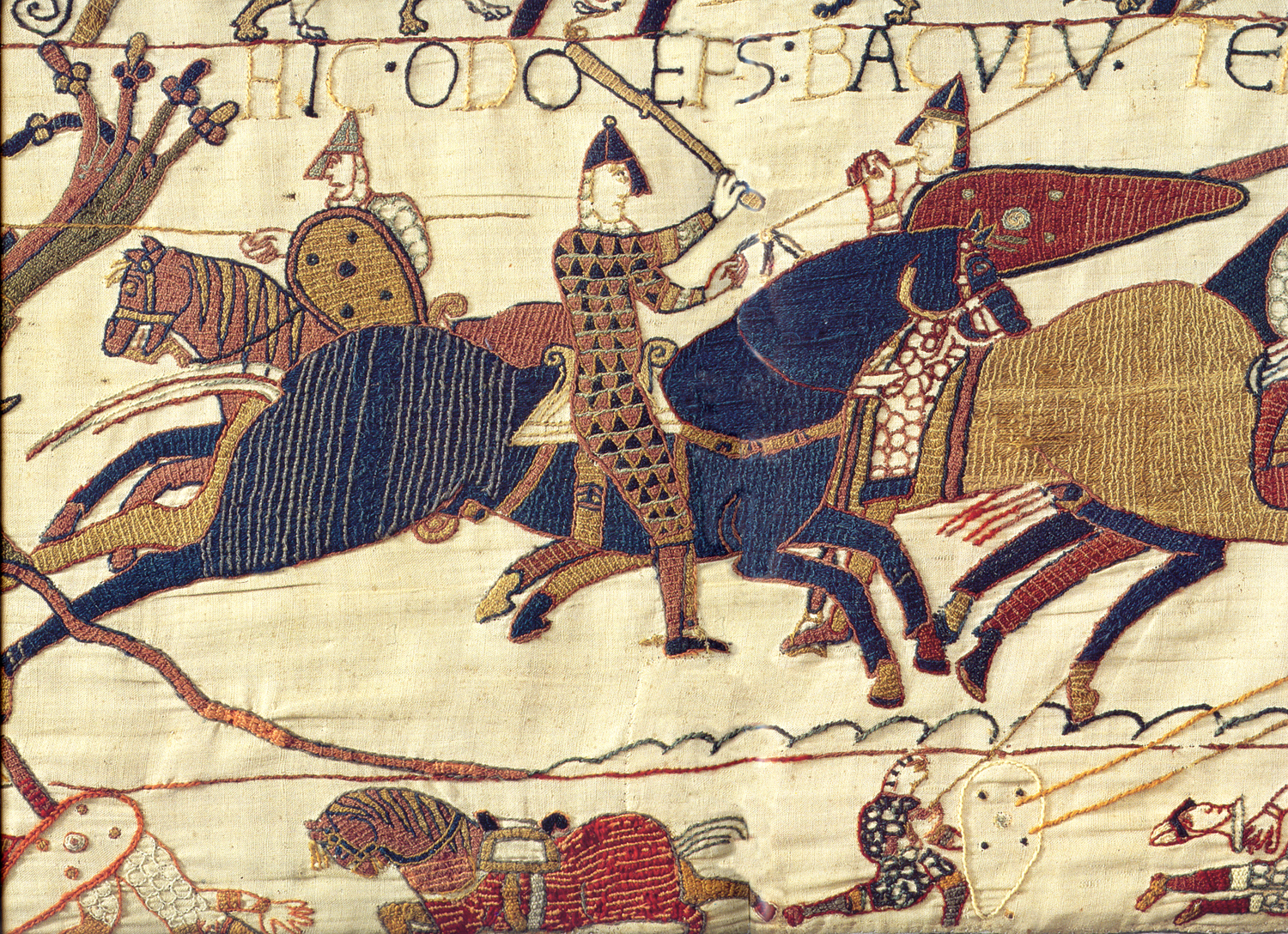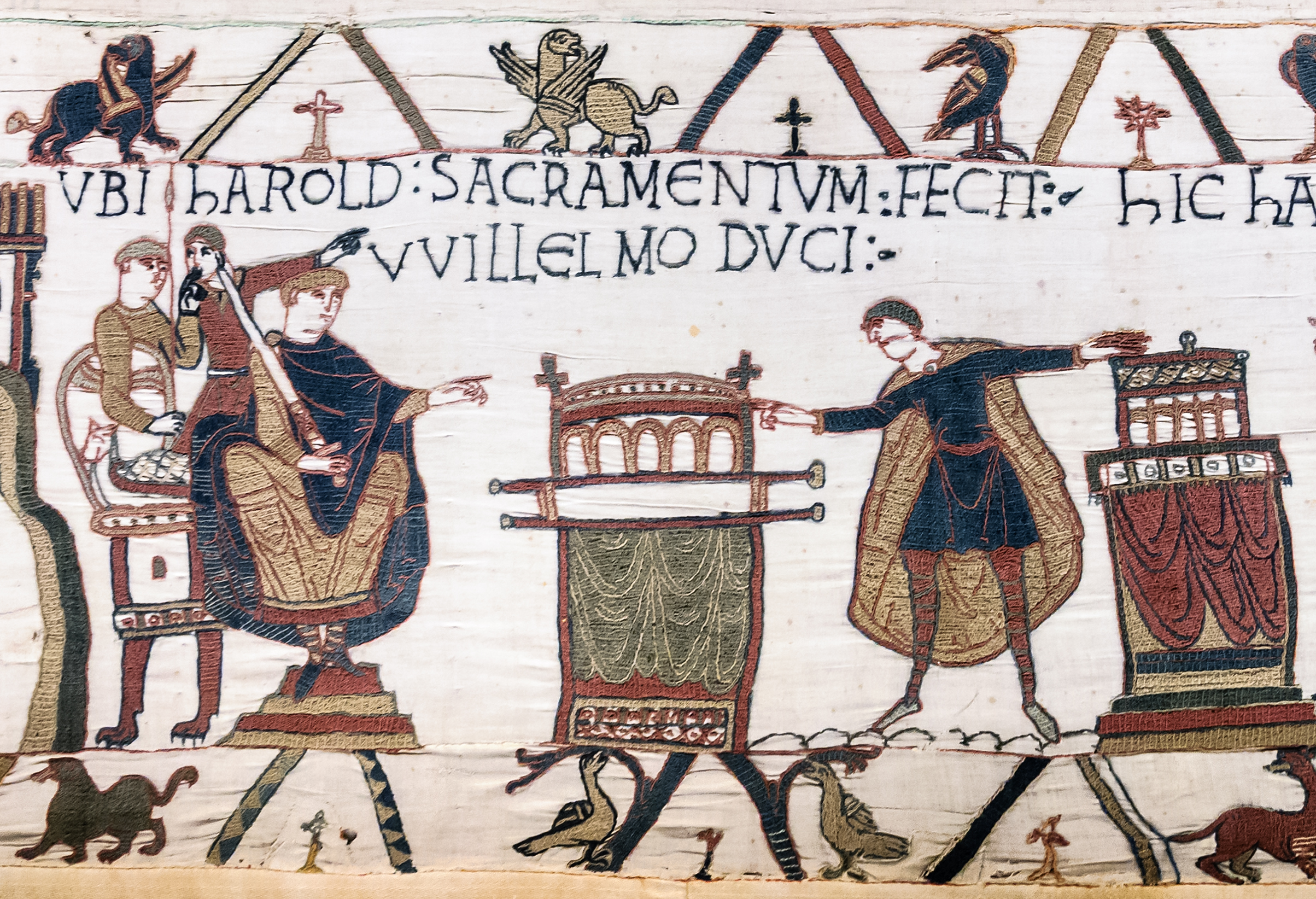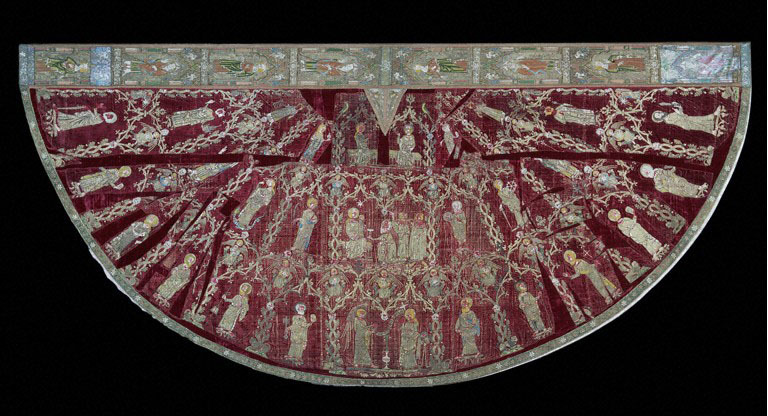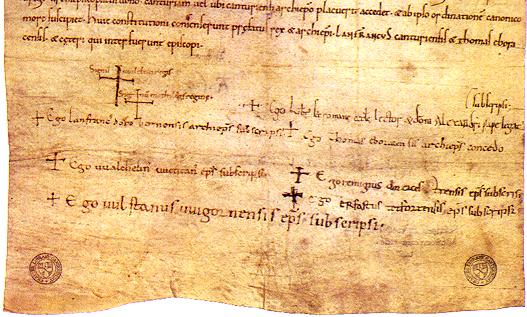|
Bayeux Tapestry
The Bayeux Tapestry is an embroidery, embroidered cloth nearly long and tall that depicts the events leading up to the Norman Conquest, Norman Conquest of England in 1066, led by William the Conqueror, William, Duke of Normandy challenging Harold Godwinson, Harold II, King of England, and culminating in the Battle of Hastings. It is thought to date to the 11th century, within a few years of the battle. Now widely accepted to have been made in England, perhaps as a gift for William, it tells the story from the point of view of the conquering Normans and for centuries has been preserved in Normandy. According to Sylvette Lemagnen, conservator of the tapestry, in her 2005 book ''La Tapisserie de Bayeux'': The cloth consists of 58 scenes, many with Latin ''tituli'', embroidered on linen with coloured woollen yarns. It is likely that it was commissioned by Bishop Odo of Bayeux, William's maternal half-brother, and made for him in England in the 1070s. In 1729, the hanging was r ... [...More Info...] [...Related Items...] OR: [Wikipedia] [Google] [Baidu] |
Bayeux Cathedral
Bayeux Cathedral, also known as Cathedral of Our Lady of Bayeux (French language, French: ''Cathédrale Notre-Dame de Bayeux''), is a Roman Catholic church architecture, church located in the town of Bayeux in Normandy, France. A Monument historique, national monument, it is the seat of the Bishop of Bayeux, Bishop of Bayeux and Lisieux and was probably the original home of the Bayeux Tapestry, still preserved nearby. The cathedral is in the Norman architecture, Norman-Romanesque architecture, Romanesque architectural tradition. The site is an ancient one and was once occupied by Ancient Rome, Roman sanctuaries. The present cathedral was consecrated on 14 July 1077 in the presence of William the Conqueror, William, Duke of Normandy. It was on this site that William may have forced Harold Godwinson to take an oath of support to him, the breaking of which led to the Norman Conquest of England – meaning that the oath must have been made before 1066. Architecture Following serious ... [...More Info...] [...Related Items...] OR: [Wikipedia] [Google] [Baidu] |
Odo Bayeux Tapestry
Odo is a name typically associated with historical figures from the Middle Ages and before. Odo is etymologically related to the names Otho and Otto, and to the French name Odon and modern version Eudes, and to the Italian names Ottone and Udo; all come from the Germanic word ''ot'' meaning "possessor of wealth". Historical Nobility * Odo the Great (died c. 735), Duke of Aquitaine * Odo I, Count of Orléans (died 834) * Odo I, Count of Troyes (died 871) * Odo II, Count of Troyes (held the title in 876) * Odo of France (860–898), King of the Franks * Odo of Toulouse (died 918 or 919), Count of Toulouse * Odo of Fézensac (died 985), Count of Fézensac * Odo I, Count of Blois (950–996) * Odo I, Margrave of the Saxon Ostmark (died 993) * Odo II, Count of Blois (983–1037) * Odo II, Margrave of the Saxon Ostmark (died 1046) * Odo, Count of Dammartin (died after 1061) * Odo, Count of Penthièvre (c. 999–1079), co-Duke of Brittany * Odo I, Duke of Burgundy (1060–1102 ... [...More Info...] [...Related Items...] OR: [Wikipedia] [Google] [Baidu] |
Regent
In a monarchy, a regent () is a person appointed to govern a state because the actual monarch is a minor, absent, incapacitated or unable to discharge their powers and duties, or the throne is vacant and a new monarch has not yet been determined. The rule of a regent or regents is called a regency. A regent or regency council may be formed ''ad hoc'' or in accordance with a constitutional rule. ''Regent'' is sometimes a formal title granted to a monarch's most trusted advisor or personal assistant. If the regent is holding the position due to their being in the line of succession, the compound term '' prince regent'' is often used; if the regent of a minor is their mother, and she is wife or widow of the king, she would be referred to as ''queen regent''. If the formally appointed regent is unavailable or cannot serve on a temporary basis, a may be appointed to fill the gap. In a monarchy, a regent usually governs due to one of these reasons, but may also be elected to ... [...More Info...] [...Related Items...] OR: [Wikipedia] [Google] [Baidu] |
Opus Anglicanum
Opus Anglicanum or English work is fine needlework of Medieval England done for ecclesiastical or secular use on clothing, hangings or other textiles, often using gold and silver threads on rich velvet or linen grounds. Such English embroidery was in great demand across Europe, particularly from the late 12th to mid-14th centuries and was a luxury product often used for diplomatic gifts. Uses Most of the surviving examples of Opus Anglicanum were designed for liturgical use. These exquisite and expensive embroidery pieces were often made as vestments, such as copes, chasubles and orphreys, or else as antependia, shrine covers or other church furnishings. Secular examples, now known mostly just from contemporary inventories, included various types of garments, horse-trappings, book covers and decorative hangings. Manufacture Opus Anglicanum was usually embroidered on linen or, later, velvet, in split stitch and couching with silk and gold or silver-gilt thread. Gold-wound t ... [...More Info...] [...Related Items...] OR: [Wikipedia] [Google] [Baidu] |
Archbishop Of Canterbury
The archbishop of Canterbury is the senior bishop and a principal leader of the Church of England, the Primus inter pares, ceremonial head of the worldwide Anglican Communion and the bishop of the diocese of Canterbury. The first archbishop was Augustine of Canterbury, the "Apostle to the English", who was sent to England by Pope Gregory the Great and arrived in 597. The position is currently vacant following the resignation of Justin Welby, the List of Archbishops of Canterbury, 105th archbishop, effective 7 January 2025.Orders in Council, 18 December 2024, page 42 During the vacancy the official functions of the office have been delegated primarily to the archbishop of York, Stephen Cottrell, with some also undertaken by the bishop of London, Sarah Mullally, and the bishop of Dover, Rose Hudson-Wilkin. From Augustine until William Warham, the archbishops of Canterbury were in full communion with the Catholic Church and usually received the pallium from the pope. During the ... [...More Info...] [...Related Items...] OR: [Wikipedia] [Google] [Baidu] |
Lanfranc
Lanfranc, OSB (1005 1010 – 24 May 1089) was an Italian-born English churchman, monk and scholar. Born in Italy, he moved to Normandy to become a Benedictine monk at Bec. He served successively as prior of Bec Abbey and abbot of St Stephen's Abbey in Caen, Normandy and then as Archbishop of Canterbury in England, following its conquest by William the Conqueror. He is also variously known as (), (), and (). In his lifetime, he was regarded as the greatest theologian of his generation. Early life Lanfranc was born in the early years of the 11th century at Pavia, where later tradition held that his father, Hanbald, held a rank broadly equivalent to magistrate. He was orphaned at an early age. Lanfranc was trained in the liberal arts, at that time a field in which northern Italy was famous. There is little or no evidence to support the myth that his education included much in the way of Civil Law, and none that links him with Irnerius of Bologna as a pioneer in the re ... [...More Info...] [...Related Items...] OR: [Wikipedia] [Google] [Baidu] |
Wadard
Wadard was an 11th-century Norman nobleman who is mentioned in the Domesday Book of 1086, and is depicted in the Bayeux Tapestry. Wadard was a noble who travelled to England in 1066 with Duke William of Normandy. He is depicted and named in the Bayeux Tapestry on a foraging expedition, and may have been in the logistics section of William's army. His portrait suggests that he held a senior rank. By the time of the Domesday Book, Wadard is recorded as a tenant of Odo, bishop of Bayeux, holding estates amounting to about 1,260 acres in Kent and elsewhere, and providing him with an income of around £127. His holdings included Farningham, Combe, and six houses in Dover, in Kent; Cassington, Thrupp, Cogges, and Little Tew in Oxfordshire, Thames Ditton in Surrey; and Glentham in Lincolnshire. The 14th century chronicler William Thorne states that Scolland, Abbot of St Augustine's Abbey granted Wadard certain land in Northbourne for life, on condition that "he pay eve ... [...More Info...] [...Related Items...] OR: [Wikipedia] [Google] [Baidu] |
Mont-Saint-Michel Abbey
The Mont-Saint-Michel Abbey is an abbey located within the city and island of Mont-Saint-Michel in Normandy, in the department of Manche. The abbey is an essential part of the structural composition of the town the feudal society constructed. On top, God, the abbey, and monastery; below this, the Great halls, then stores and housing, and at the bottom (outside the walls), fishermen's and farmers' housing. The abbey has been protected as a French ''monument historique'' since 1862. Since 1979, the site as a whole – i.e., the Mont-Saint-Michel and its bay – has been a UNESCO World Heritage Site and is managed by the ''Centre des monuments nationaux''. With more than 1.335 million visitors in 2010, the abbey is among the most visited cultural sites in France. History The first text about an abbey is the 9th-century Latin text ''Revelatio ecclesiae sancti Michaelis in monte Tumba'' written by a '' chanoine'' living at Mont-Saint-Michel or at the '' Cathédrale Saint-André ... [...More Info...] [...Related Items...] OR: [Wikipedia] [Google] [Baidu] |
Scriptorium
A scriptorium () was a writing room in medieval European monasteries for the copying and illuminating of manuscripts by scribes. The term has perhaps been over-used—only some monasteries had special rooms set aside for scribes. Often they worked in the monastery library or in their own rooms. Most medieval images of scribing show single figures in well-appointed studies, although these are generally author portraits of well-known authors or translators. Increasingly, lay scribes and illuminators from outside the monastery also assisted the clerical scribes. By the later Middle Ages secular manuscript workshops were common, and many monasteries bought more books than they produced themselves. The functional outset When monastic institutions arose in the early sixth century (the first European monastic writing dates from 517), they defined European literary culture and selectively preserved the literary history of the West. Monks copied Jerome's Latin Vulgate Bible and ... [...More Info...] [...Related Items...] OR: [Wikipedia] [Google] [Baidu] |
Canterbury
Canterbury (, ) is a City status in the United Kingdom, city and UNESCO World Heritage Site, in the county of Kent, England; it was a county borough until 1974. It lies on the River Stour, Kent, River Stour. The city has a mild oceanic climate. Canterbury is a popular tourist destination, with the city's economy heavily reliant upon tourism, alongside higher education and retail. As of 2011, the city's population was over 55,000, including a substantial number of students and one of the highest student-to-permanent-resident ratios in Britain. The site of the city has been occupied since Paleolithic times and served as the capital of the Celtic Cantiaci and Jutes, Jute Kingdom of Kent. Many historical structures fill the area, including a city wall founded in Roman Britain, Roman times and rebuilt in the 14th century, the Westgate Towers museum, the ruins of St Augustine's Abbey, the Norman Canterbury Castle, and the List of the oldest schools in the world, oldest extant schoo ... [...More Info...] [...Related Items...] OR: [Wikipedia] [Google] [Baidu] |
St Augustine's Abbey
St Augustine's Abbey (founded as the Monastery of Ss Peter and Paul and changed after its founder St Augustine of Canterbury's death) was a Benedictine monastery in Canterbury, Kent, England. The abbey was founded in 598 and functioned as a monastery until its dissolution in 1538 during the English Reformation. After the abbey's dissolution, it underwent dismantlement until 1848. Since 1848, part of the site has been used for educational purposes (used as boarding houses and a library by The King's School, Canterbury) and the abbey ruins have been preserved for their historical value. From founding until dissolution In 597, Augustine arrived in England, having been sent by the missionary-minded Pope Gregory I to convert the Anglo-Saxons.England's Christian Heritage: Kent Guide at englandschristianheritage.org.uk, acce ... [...More Info...] [...Related Items...] OR: [Wikipedia] [Google] [Baidu] |









